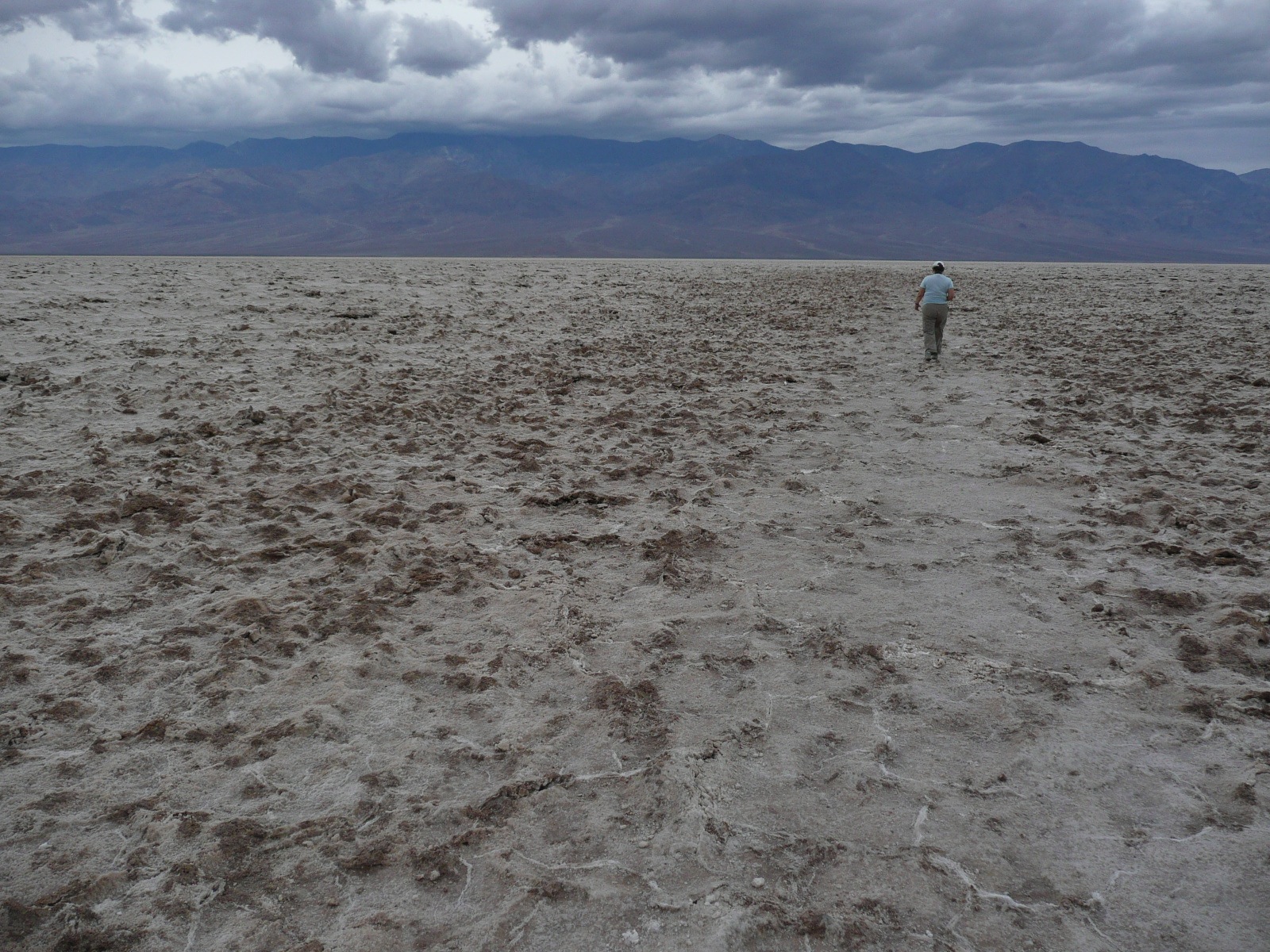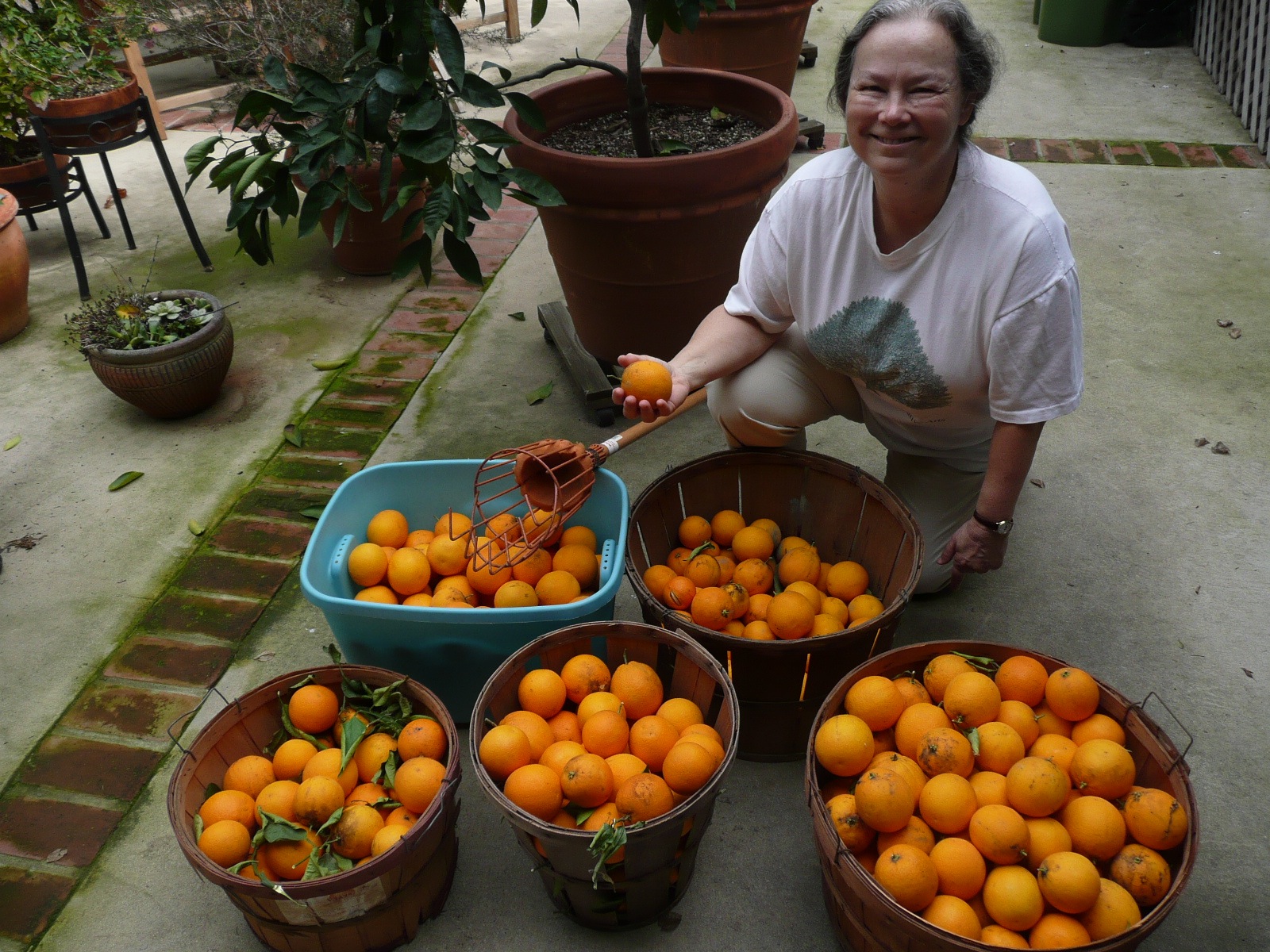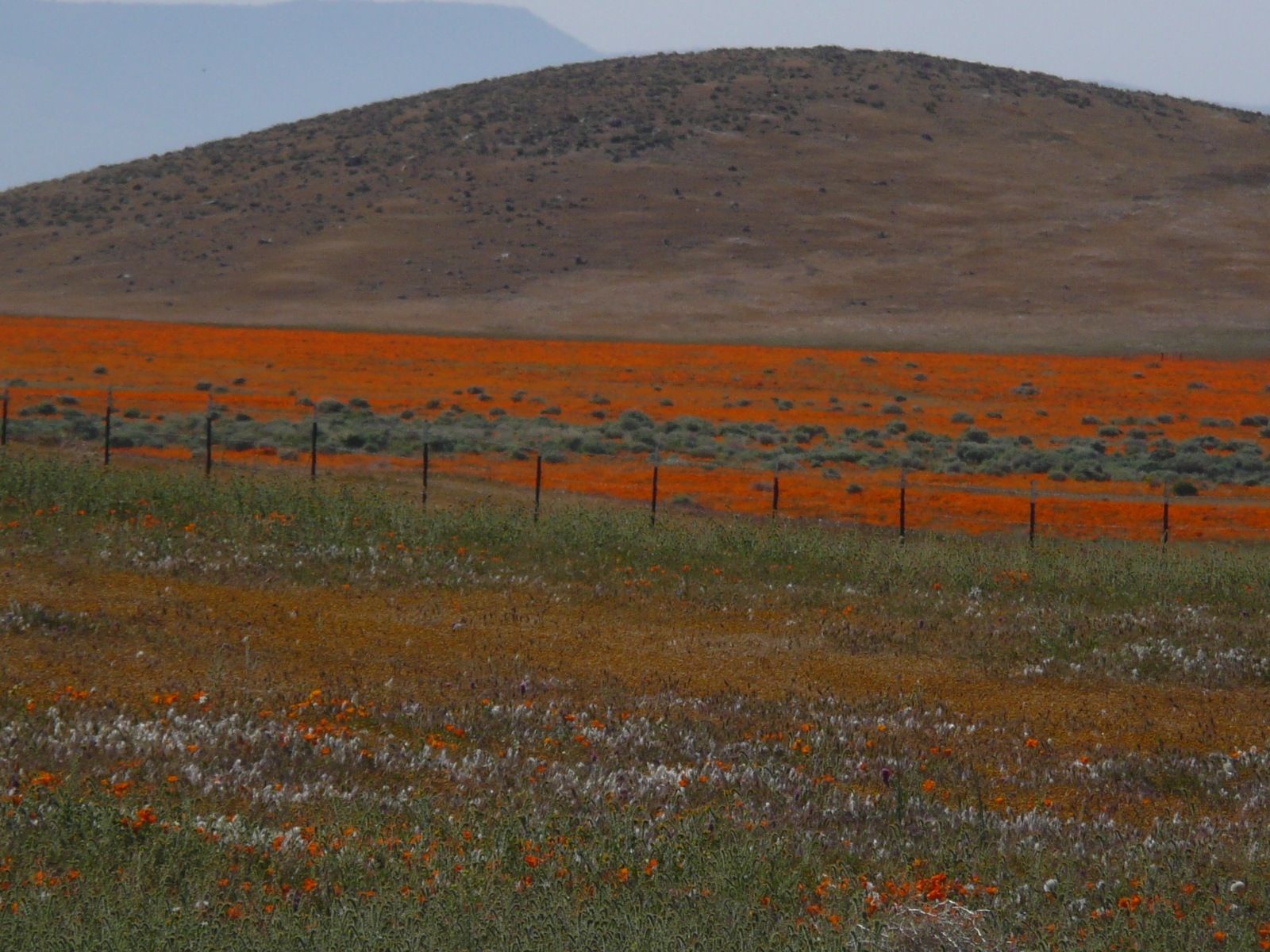Andrea Carter Brown Shares Her Thoughts
by Andrea Carter Brown · April 12, 2012Andrea Carter Brown, our most recent James Dickey Prize for Poetry winner, has agreed to share with us her thoughts and inspirations behind her poems “Cloud Studies: Hudson River School – Homage to Constable,” “Ars Poetica – After 9/11,” and “In the Desert.” If you’re interested in listening to Andrea perform a poetry reading of these works, check out our Tumblr. You can listen to “Ars Poetica” here, “Cloud Studies” here, and “In the Desert” here!
On Poetry & Growing Oranges, Tangerines, Lemons, and Limes
This April 26th, I will be carrying “Meditation at Lagunitas” by Robert Hass in my pocket as part of National Poetry Month festivities. (Check out the “Poem in Your Pocket” program right here!) I don’t remember when I first came across this poem. Or how. But I do know it was in the early nineties, when I was just beginning to write poetry. By the time I first went to an artist’s colony, Ragdale, I was so obsessed with this poem, I called a friend and had her Express Mail my copy of Praise to me in Lake Forest, Illinois. The local library didn’t have a copy, and the collection was out of print so I couldn’t buy it. I just had to have it with me. Once it arrived, I could write. And did, up a storm, my first experience of that white heat of creativity that every artist lives for, although I would not have called myself that at the time. Praise became the collection I slipped into a suitcase every trip, my good luck talisman, the ever-present reminder of the beauty and power of poetry to move.
Little did I guess then that life would move me from the New York City area, where I was born, grew up, became a writer, and lived most of my life, to Southern California a few years after 9/11, that “Golden State” as far away from my East Coast history as it is possible to get in the continental US. In retrospect, “Meditation at Lagunitas” paved the way.
 Through the eyes of this poet I had already fallen in love with the land: by turns tropical, then arid, with a living, active geology, its many forms jostled together in close proximity. Then there are the plants, and the wildlife, especially the birds (when I saw stilts for the first time, I knew right away where Empire Stalkers came from), but also the bobcats, ringtails, lizards and even the racers, the rattlers. And this from someone with a genuine snake phobia since childhood. Besides the subtle palette of the desert, I loved that you could lose yourself in it, that without sufficient care, you could die there. It was existentialism pure and simple. After surviving 9/11, and witnessing the things I did that day and in the months after, life among natural extremes came as a relief. It was easier to worry about earthquakes, cleaner.
Through the eyes of this poet I had already fallen in love with the land: by turns tropical, then arid, with a living, active geology, its many forms jostled together in close proximity. Then there are the plants, and the wildlife, especially the birds (when I saw stilts for the first time, I knew right away where Empire Stalkers came from), but also the bobcats, ringtails, lizards and even the racers, the rattlers. And this from someone with a genuine snake phobia since childhood. Besides the subtle palette of the desert, I loved that you could lose yourself in it, that without sufficient care, you could die there. It was existentialism pure and simple. After surviving 9/11, and witnessing the things I did that day and in the months after, life among natural extremes came as a relief. It was easier to worry about earthquakes, cleaner.
Conversely, by moving away from NYC, it became possible for me to write about 9/11. While some writers were able to quickly articulate their response to that day, I spent months unable to write at all. There was our contaminated home a block from the WTC to deal with. There were health problems resulting from exposure to dust and other toxins which took years to get under control. We eventually moved back into our remediated apartment only to discover that memories of that day were ever-present, inescapable. It was over six months before I wrote anything at all about it. In response to a call for entries for Poetry After 9/11: An Anthology of New York Poets (Melville House Publishing), I very quickly wrote two elegies, “The Old Neighborhood” and “Ash Wednesday.” It would be over a year before I wrote another word about it.
 From a short sequence of very badly rhymed quatrains (an assignment for Marilyn Hacker’s prosody class at CCNY in April, 2003, where I had gone to finish my M.A.), the project grew. The quatrains became a sonnet, grew to a sonnet crown, a double, a sequence of narrative heroic double sonnet crowns, to minimalist sonnet portraits of the 10 people who died 9/11 from the small NJ commuter town where I grew up, to step-out historical poems about NYC, to lyrical interludes about life overlooking the harbor in Lower Manhattan before 9/11, to an extended section of aftermath poems because 9/11 didn’t end that day but continued to cast ripples and ricochet through the months, years, the decade to come. The aftermath continues; the body of work continues to grow.
From a short sequence of very badly rhymed quatrains (an assignment for Marilyn Hacker’s prosody class at CCNY in April, 2003, where I had gone to finish my M.A.), the project grew. The quatrains became a sonnet, grew to a sonnet crown, a double, a sequence of narrative heroic double sonnet crowns, to minimalist sonnet portraits of the 10 people who died 9/11 from the small NJ commuter town where I grew up, to step-out historical poems about NYC, to lyrical interludes about life overlooking the harbor in Lower Manhattan before 9/11, to an extended section of aftermath poems because 9/11 didn’t end that day but continued to cast ripples and ricochet through the months, years, the decade to come. The aftermath continues; the body of work continues to grow.
This manuscript of poems, September 12, includes the three poems in Five Points which won the James Dickey Prize, “Cloud Studies: Hudson River School – Homage to Constable,” “Ars Poetica – After 9/11,” and “In the Desert.” Other poems from it can be found online or in print at Beltway Poetry Quarterly, Mississippi Review, The Delaware Poetry Review, and River Styx, among many other journals, and in several anthologies. For the 10th anniversary of 9/11 this past September, Split This Rock Poetry Festival published “After the Disaster: Fragments” for their “Poem of the Week.” This project has lead me to be on panels at AWP and Split This Rock about the poetry of bearing witness, the challenges of writing history as poetry, and the legacy of 9/11 in poetry ten years later.
It’s safe to say that September 12 would not have been written if we hadn’t left NYC and moved to Los Angeles in 2004. In the peace and quiet of our new home, I grew to feel relatively safe again. From the perspective of two thousand miles away, I was able to revisit those painful memories and make something of them, to preserve one survivor’s testimony in its particularity, to contribute to the historical record. I won’t say it’s been easy. It’s been a long, slow, ongoing process of discovery.
And recovery.
 Of the many changes our move from NYC to Southern California has brought, the most surprising to me is that I have become a backyard citrus farmer. Out here, April is the month the last of last year’s crop of Bearss limes and Valencia oranges wait to be harvested, so overripe they fall on their own to the ground. All the citrus trees are simultaneously covered with flowers: Navel orange, Satsuma tangerine, sweet Meyer lemon, tart Eureka, as well as the lime and Valencia. Each variety has its own subtly different sweetness; every flower is so sticky the bees get caught if they chow down too deeply. We don’t cull the blossoms to get bigger fruits; we let nature take its course. Early morning, late afternoon, in the middle of the night under the moon that shares the sky this month with Jupiter, Venus, Mars, and Saturn, I go from tree to tree inhaling the scents. Aromatherapy au natural. The best k
Of the many changes our move from NYC to Southern California has brought, the most surprising to me is that I have become a backyard citrus farmer. Out here, April is the month the last of last year’s crop of Bearss limes and Valencia oranges wait to be harvested, so overripe they fall on their own to the ground. All the citrus trees are simultaneously covered with flowers: Navel orange, Satsuma tangerine, sweet Meyer lemon, tart Eureka, as well as the lime and Valencia. Each variety has its own subtly different sweetness; every flower is so sticky the bees get caught if they chow down too deeply. We don’t cull the blossoms to get bigger fruits; we let nature take its course. Early morning, late afternoon, in the middle of the night under the moon that shares the sky this month with Jupiter, Venus, Mars, and Saturn, I go from tree to tree inhaling the scents. Aromatherapy au natural. The best k ind.
ind.
This National Poetry Month, in the oasis of our little backyard, I will revisit some of my favorite poems and the sequences that have inspired me – “Clearances” by Seamus Heaney, “When I have fears” by Keats, “A Long Story” by Andrew Motion, Jane Kenyon’s “Having it Out with Melancholy” and, of course, “Let Evening Come,” all of Elizabeth Bishop, but especially “At the Fish Houses” and “Filling Station,” Marilyn Nelson’s “A Wreath for Emmett Till,” and “Calle Visión” by Adrienne Rich, whose recent death has left us bereft. And this spring, amid the citrus trees, the bees, the sulphurs, and the Allen’s hummingbirds that drink from them, I will especially praise Robert Hass, the Poet Laureate from my new home state, whose poems about this state prepared me to love this new life, which in turn enabled me to do justice to the life left behind.
If you’re interested in checking out some of Andrea’s poems from The Disheveled Bed, visit this site for the program “Poetry Heals,” a National Poetry Month collaboration between the New Jersey Council for the Humanities and CavanKerry Press.
Andrea Carter Brown’s poems can be found in Five Points Vol. 14.2. Click here for more info!
